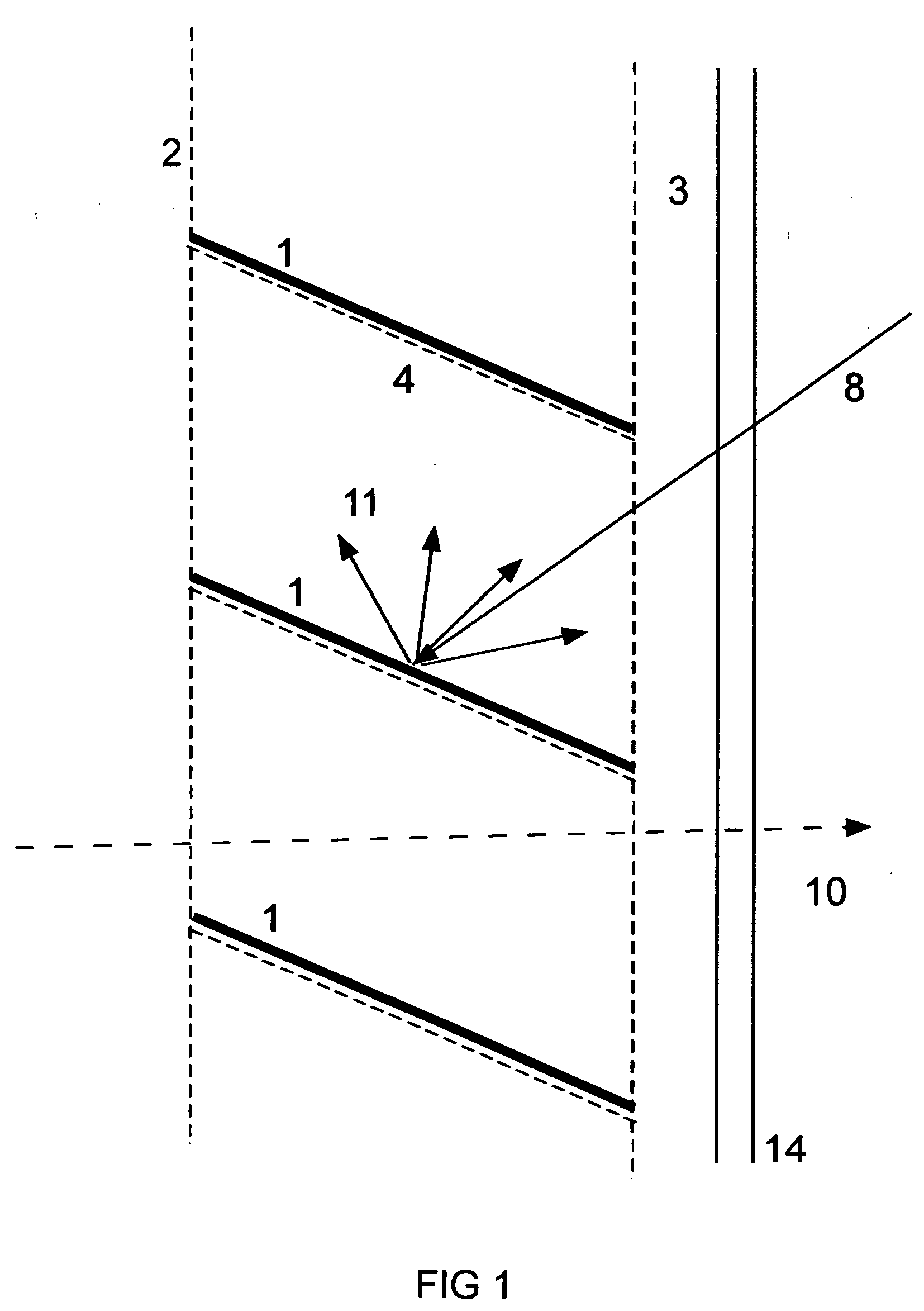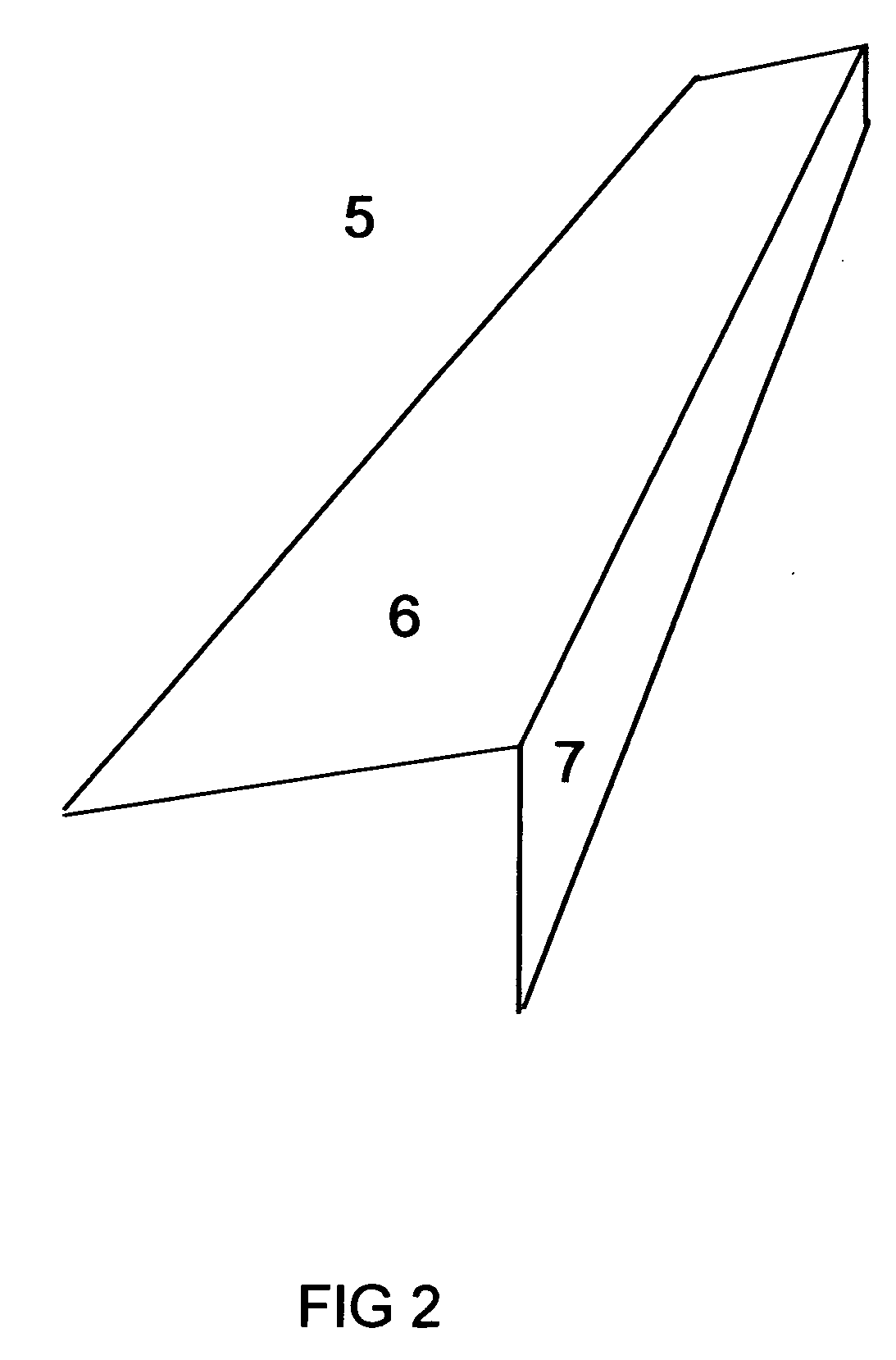Daylighting system comprising light re-direction elements in a Venetian blind
a daylighting system and venetian blind technology, applied in the direction of optics, light protection screens, door/window protective devices, etc., can solve the problems of compromising the ability of venetian blinds to redirect natural light into the deep interior of buildings, unable to teach the use of familiar and commonly available venetian blinds, and none of the prior art systems are suited to conversion of standard venetian blinds
- Summary
- Abstract
- Description
- Claims
- Application Information
AI Technical Summary
Benefits of technology
Problems solved by technology
Method used
Image
Examples
second embodiment
[0014]In the invention the diffusion of reflected light from the surface of arm 6 is achieved by forming the arm 6 with a slight upward convex curvature prior to or after folding into an angle section.
third embodiment
[0015]In a third embodiment the diffusion of reflected light from the surface of arm 6 is achieved by a fine general roughening of the metal forming the surface of arm 6 or by painting the surface of arm 6 with a high gloss white paint.
[0016]The purpose of diffusely reflecting sunlight from upper arm 6 of the light redirecting elements 5 is to spread the sunlight reflected from each light redirecting element over a wide extent of the ceiling of the room being illuminated. This desired effect is illustrated in FIG. 5 which shows the daylighting system of this invention installed in the window of a room. As indicated in FIG. 5 light redirecting elements 5 are inserted between the slats in the upper half of the Venetian blind. The reason for insertion only in the upper half of the blind is explained below. Typically, incident sunlight 8 is diffusely reflected from upper arm 6 of each of the elements into an output 9 that is spread over a wide extent of the ceiling of the room. As the d...
PUM
 Login to View More
Login to View More Abstract
Description
Claims
Application Information
 Login to View More
Login to View More - R&D
- Intellectual Property
- Life Sciences
- Materials
- Tech Scout
- Unparalleled Data Quality
- Higher Quality Content
- 60% Fewer Hallucinations
Browse by: Latest US Patents, China's latest patents, Technical Efficacy Thesaurus, Application Domain, Technology Topic, Popular Technical Reports.
© 2025 PatSnap. All rights reserved.Legal|Privacy policy|Modern Slavery Act Transparency Statement|Sitemap|About US| Contact US: help@patsnap.com



